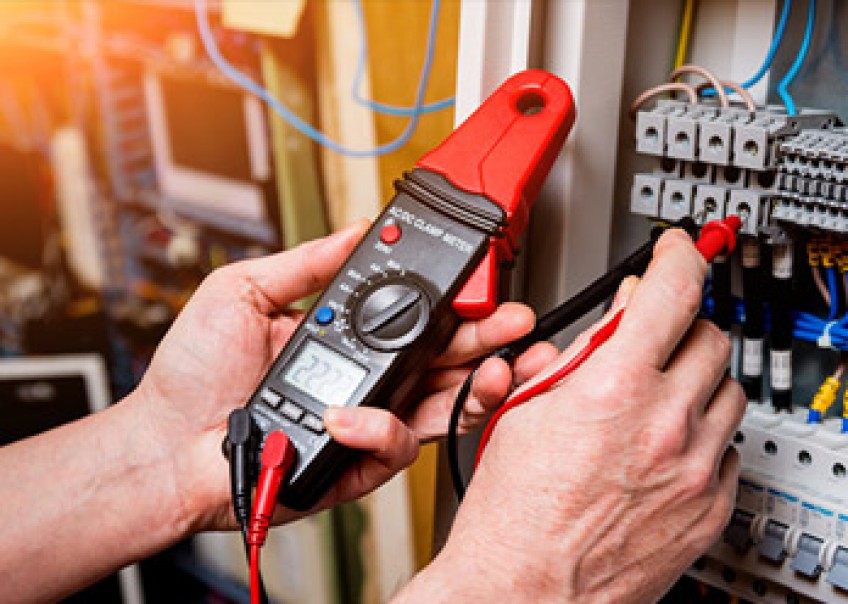- Matlock
- Ashbourne
- Matlock: 01629 580228
- Ashbourne: 01335 346246

Residential Lettings - Electrical Safety Standards
AN UPDATE FOR LANDLORDS – RESIDENTIAL LETTINGS
ELECTRICAL SAFETY STANDARDS – SUMMARY FACTSHEET
CONTEXT
The Housing and Planning Act 2016 allowed Ministers to
introduce
electrical safety standards for tenancies in the private
rented sector.
THE CHANGES
The Electrical safety Standards in the Private Rented
Sector (England)
Regulations 2020 were passed by Parliament on 18 March
2020.
ELIGIBILITY
The Regulations apply in England to all new tenancies from
1 July 2020
and all existing tenancies from 1 April 2021.
(properties let on statutory periodic tenancies where the
Fixed Term expires between 1 July 2020 and 1 April 2021 will
require an
inspection and test at this point under the Regulations.)
EXCLUDED TENANCIES
The rules do not apply to social housing, shared
accommodation with
a landlord or landlord’s family, long leases, student
halls of residence,
hostels and refuges, care homes, hospitals and hospices as
well as other
accommodation relating to healthcare provision.
NB: Sharing accommodation with a landlord means if the occupier
uses
amenities (toilet, personal washing facilities, a kitchen or
living room). A
member of the landlord’s family is defined as a married or civil
partner
and an
immediate family relative.
WHAT DOES THIS MEAN?
Private landlords must ensure:
• Electrical
safety standards are met when the property is occupied
during a tenancy.
• Every
fixed electrical installation at the property is inspected and
tested at least every five years by a qualified person.
• The
first inspection and testing is carried out before new
tenancies commence on or after 1 July 2020 and by 1 April
2021
for existing tenancies.
NB: Where the most recent report requires an inspection and
testing to
be at intervals of less than five years, it must be at intervals
specified in
that report.
Electrical safety standards: the inspection and test of the installation
is carried out in accordance with the eighteenth edition
of the wiring
regulations BS 7671:2018 (the national standard to which
all domestic
wiring must conform).
Electrical installation: fixed electrical cables or fixed electrical
equipment located on the consumer’s side of the
electricity supply
meter as set out in the Building Regulations 2010.
Qualified person: someone who is competent to undertake the
inspection and testing as well as any further
investigative or remedial
work in accordance with the electrical safety standards.
WHAT YOU NEED TO DO
Following the inspection and testing a landlord must:
1. Obtain a report that includes the results of the
inspection and test
and the date of the next inspection and test.
2. Supply a copy of that report to each existing tenant at
the property
with 28 calendar days of the inspection and test.
3. Supply a copy of the most recent report to any new
tenant before
the tenant moves in and to any prospective tenant within
28 days of
receiving a request in writing for the report.
4. Retain a copy of the report until the next inspection
and test is
due as well as supply a copy to the person carrying out
the next
inspection and test.
NB: When requested the report must be provided to the local
authority
within
seven calendar days.
Electrical Installation Safety Report
Typically, an Electrical Installation Condition Report
(EICR) is used to
conduct an electrical installation safety report.
FURTHER WORK IS REQUIRED
Where a report requires the landlord to undertake further
investigative or
remedial work, the landlord must ensure that the work is
carried out by
a qualified person within 28 calendar days or the period
specified in the
report if less than 28 days, starting with the date of the
inspection
and testing.
1. Obtain: landlords must obtain written
confirmation from a qualified
person that further work has been carried out and that the
electrical safety standards have been met.
2. Supply: written confirmation together
with a copy of the report
which required the further investigative or remedial work
to each
existing tenant and the local housing authority within 28
days of
completion of the work.
NB: This process must be repeated every time further investigative
and
remedial work is carried out.
REMEDIAL NOTICE
Where a local housing authority believe that a private
landlord is in breach
of the rules and the most recent report does not indicate
that urgent
remedial action is required, the authority must serve a
Remedial Notice
on the landlord.
A Remedial Notice must:
• specify
the premises to which the notice relates
• specify
that the local authority believes that the landlord has failed
to comply with
• specify
the remedial action that should be taken
• require
the landlord to take action within 28 days (beginning on the
day the notice is served)
• explain
that the landlord can make written representation against
the Notice with 21 days
• explain
the financial penalties that a landlord could be liable for
NB: Where the landlord has been prevented from entering the
property
by the tenant or tenants, the landlord will not be deemed to have
failed
to comply with the Regulations.
This summary information is kindly reproduced from
Arla Propertymark Guidance Notes.
